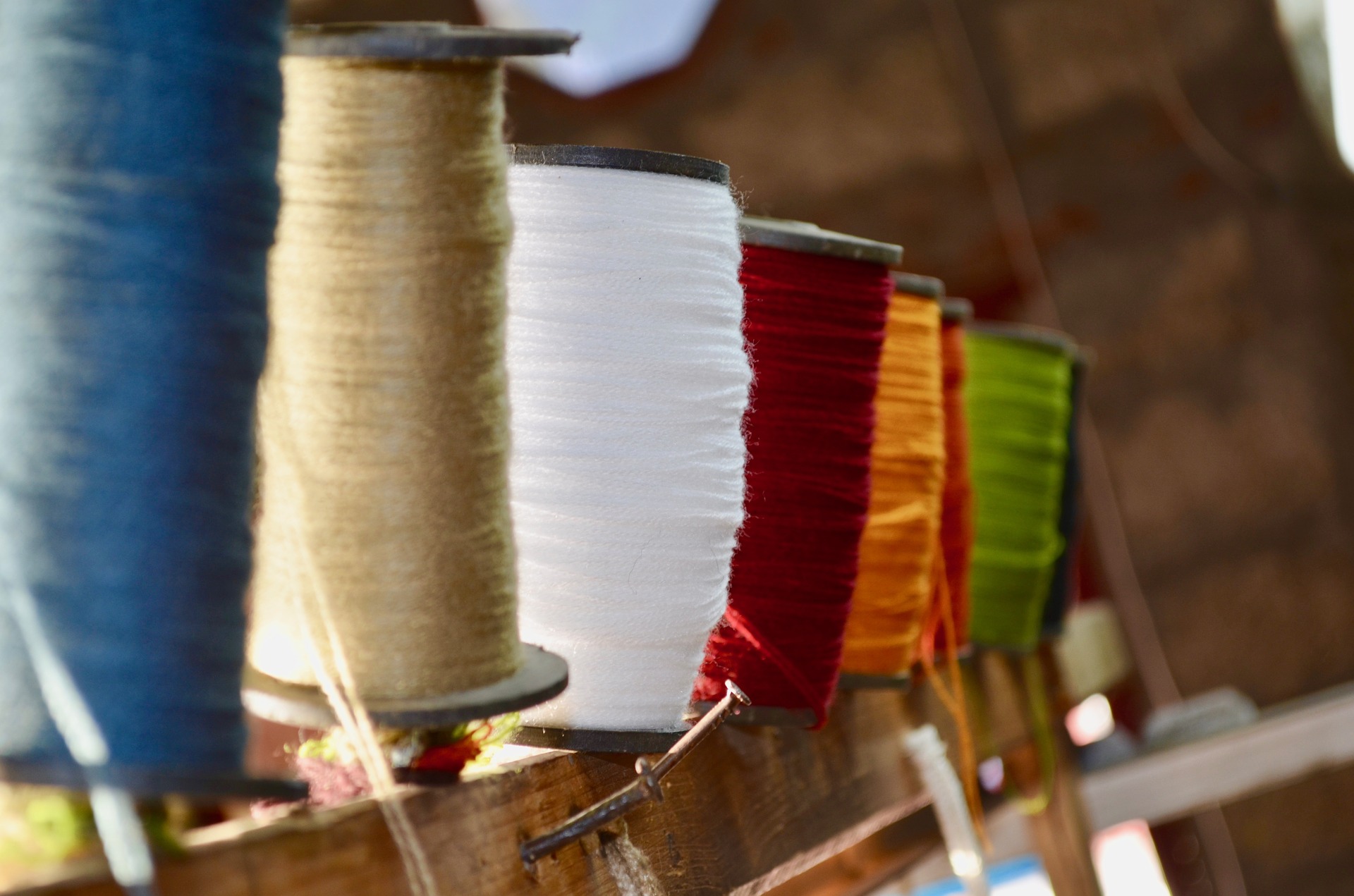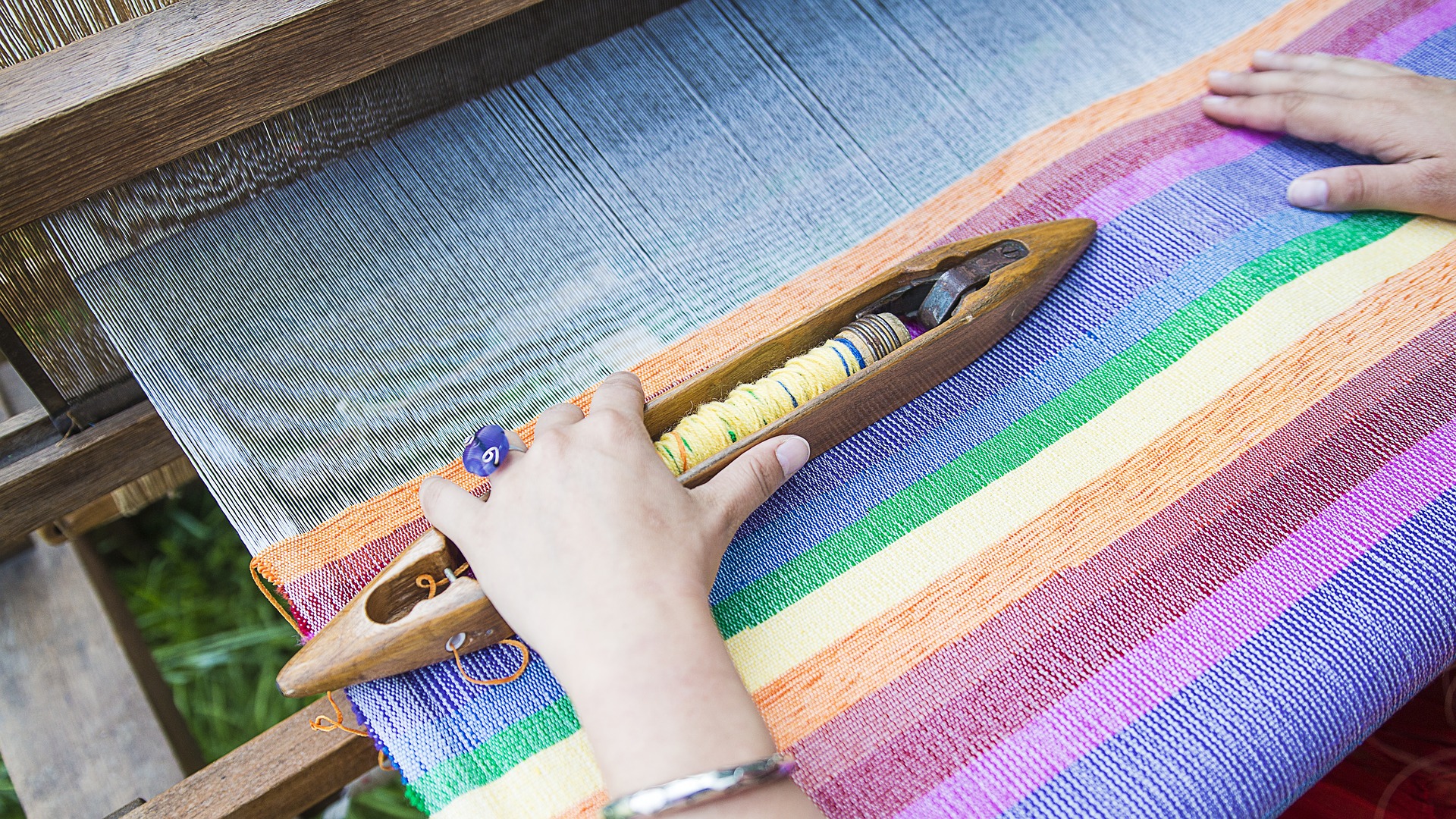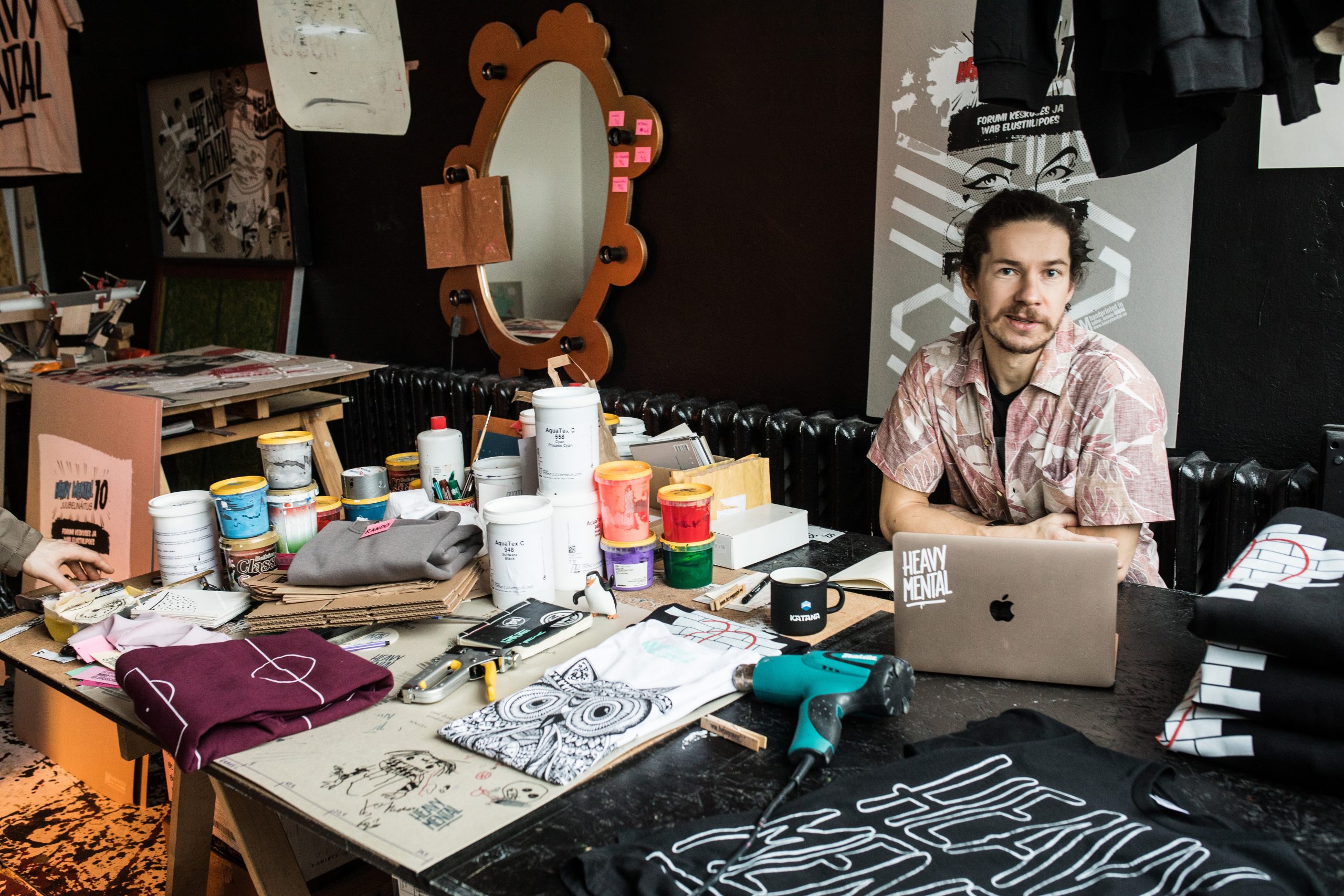Textile manufacturing: Unweave the key to success
Textile manufacturing is an old, but still a massively important industry. In this article, we explore the history and how you can make it in the industry.
Team Katana

Textile manufacturing is a huge and diverse industry. That’s why we’ve looked into its history, how it works today, and tips you can use to crush it in the business.
It’s crazy to think that the very shirt on your back represents millions of years of innovation, as far back as the prehistoric times, with the earliest known evidence of textile making (weaving) dating back to around 5000 BCE.
The clothes we wear, the carpets we walk on, the very art we appreciate.
All these different things stem from the same manufacturing processes and can either provide comfort or an essential need for survival.
Not to get all gooey, but textiles are an important staple to culture all across the globe and to our existence in general.
Textile manufacturing is an important industry, but one with a sullied reputation due to exploitation, ill-treatment of factory workers, and even deaths in the case of the Rana Plaza collapse.
That’s why we’ve delved into the textile manufacturing industry, its history, how textile manufacturers operate today, and how you can run a textile manufacturing business.
Pro tip: First things first, if you want to make it in textile production, or any area of the manufacturing industry, you’re going to need all the help you can get on optimizing your manufacturing inventory management.
So, let’s unravel everything you need to know to become successful as a textile manufacturer.
What is textile manufacturing?

Textile manufacturing is a huge industry that entails the conversion of fiber into yarn, and that yarn into fabric.
These fabrics are dyed, printed, or fabricated into clothes and various other items. Different types of fibers are used to produce yarn, with cotton remaining the most important natural fiber. In 2007, 25 million tons of cotton were produced from 35 million hectares across the globe.
According to forecasts, the value of textile manufacturing is going to reach $842.6 billion in 2020, a huge increase of 26.2% since 2015.
Textile production is a long and complex process, and it produces tons of different finished products.
These textile production processes can be:
- Spinning
- Weaving
- Dyeing
- Knitting
- Bonding
- Embroidery
- Felting
- Tufting
The term textile comes from the Latin word textilis and the French exere, that translates “to weave,” and used to only refer to woven fabrics. But, as methods and processes changed over time, textiles have come to include many different fabrics and materials.
So, now we know what is textile manufacturing. But, what’s the history behind this important industry, and how do textile manufacturers operate today?
Historical and modern textile manufacturing
The earliest textile manufacturing process was taking a piece of thread (regardless of material) to create loops in a repeated movement to design nets and basketry. As mentioned earlier in the article, the oldest known evidence of people employing this textile manufacturing process is during the Neolithic period.
The Silk Road (207 BCE–220 CE) was an ancient trade network which saw goods such as iron, ivory, horses, pottery, and the most coveted of all, silk, pass through.
This will displease the anti-capitalists and isolationists among us, but silk is one of the most influential commodities ever produced, as it led to the first steps to globalization.
Fast forward to the industrial revolution and beyond. Now large-scale textile manufacturing employs process automation, using machinery and software to design and produce fabrics in an incredibly short amount of time.
Textile manufacturing in the US represents 2% of the manufacturing workforce.
The spirit of the Silk Road stays strong, as exports from the US to free trade agreement partners make up 65% of textile manufacturing in the US.
In 2018, textile manufacturing in the US totaled an estimated $76.8 billion in apparel shipments, a 12% increase since 2009.
Textile manufacturing is an important industry that has been with us since the beginning of time. But now you know the ins-and-outs of this industry, how do textile manufacturing companies find success?
How to crush textile manufacturing?
Giving that many people in textile manufacturing in the US are entrepreneurs selling independently, these top tips will be focusing on them. However, for textile production involving fabric making, feel free to skip ahead to Cloud Inventory Software for your shortcut to success.
Sell original artwork
This point sort of goes without saying. But, deciding how you go about advertising and selling your work is the tricky part. Do you:
- Attend open studios, art exhibitions, trade and craft fairs
- Get art gallery representation
- Build your own website
- Look at art marketing sites
- Sell across social media channels
- Online marketplaces such as Etsy
Well, which channel you choose is down to you, although we recommend you to take a multi-channel selling strategy, so all your eggs aren’t in one basket.
Check out textile manufacturing forums and research the market in your area or how others are selling online to see which is the best approach for you.
Art Licensing
Art licensing is a contract between manufacturers or retailers and artists, allowing sellers to use their artwork to sell their products. Essentially, it’s allowing another business to use your copyrighted products.
An example of this would be VIDA, a manufacturer who teams up with artists, to secure the rights to use their designs, and sells them on the artists’ behalf. A great collaboration for anyone who wants to get into textile manufacturing but doesn’t have the tools or resources to do so.
However, if that’s something that intimidates you, you could instead team up with a contract manufacturer to get your foot in the door of larger-scale textile manufacturing.
Become an Industry Leader
Become the go-to person for anyone who’s looking for tips and tricks when it comes to textile manufacturing. You can do this via blogs, vlogs, podcasts, newspaper publications, etc. Anywhere you can think to tell people about textile production.
This will not only help you become an established D2C brand, but it’s going to be an invaluable marketing tool that can drive traffic to your store.
Content creation is a long-term strategy and requires a lot of work to successfully pull off, but the benefits will be worth the effort if you stick it out for the long haul.
Pro tip: With so much to do in textile manufacturing, it’s easy to get sidetracked doing one of your other many responsibilities. That’s why it’s important to work on your production planning, so you have time to manufacture your products and still complete your other takes.
Teach workshops
Take this boots-on-the-ground approach to monetize your efforts in textile manufacturing. Running workshops is going to help you establish yourself as an industry expert locally (or even in a larger area if you’re willing to travel) and online.
How you deliver workshops is down to you, the format could be:
- In-person groups
- One-on-one coaching sessions
- Teaching online courses
If you do decide to hold workshops at a location that requires you to travel, be sure to find a system that allows for easy raw material inventory management. As your own material will be in transit and if all of the material isn’t used, it’ll be heading back to your warehouse. Meaning there’s a lot of opportunity for material to become lost or for you to order more materials than needed.
Sell patterns and kits
Textile manufacturing is a popular hobby, and it could be that you could design blueprints of your designs and create a starter pack for other aspiring artists through kitting.
You could sell kits as:
- Bundles
- Personalized products
- Subscription boxes
- Samples
- Seasonal promotions
It might be that you prefer to do a promotional giveaway, which can be a quick and easy way to generate buzz around your textile manufacturing brand.
Commissions
This is where you’ll reach out to individuals, corporations, public and state organizations to make products through bespoke manufacturing.
Making customized products, although it will have a longer manufacturing lead time, will increase interest from customers as manufacturing trends say that customers want products that tell a story and are ethically sourced.
Design fabrics
Similar to arts licensing, designing and selling designs via a 3rd party printer allows you to sell your own print via these manufacturers. For example, with Spoonflower, who will take your designs and sell them as fabrics, wallpaper, and home décor.
So, these are just some of the ways that you can get your business established among the other textile manufacturing companies already out there.
However, regardless of which way you decide to take your textile manufacturing business, it’s important to get set up with inventory software that’s going to help you keep control of your business.
Cloud Inventory Software for textile manufacturing
Katana’s textile manufacturing software supports businesses operating within the textile manufacturing industry. From the smaller workshops scaling their embroidery business to industrial factories that produce the fabric.
Katana can support these businesses by giving them a birds-eye view of their entire business, and the tools to help achieve efficiency in:
- Workflow management
- Inventory management
- Order fulfillment management
Adopting Katana Cloud Inventory Software into your business will help you relieve pressure by scraping your inefficient excel spreadsheets or clunky MRP systems and replace them with a ridiculously easy to read, visual dashboard.
It also provides you with:
Real-time master planning
Katana uses a a real-time master planner, which takes away all the hassle of manual inventory management.
So, in Katana, you can easily track your finished goods and raw materials inventory. However, if a customer purchases something or you create a manufacturing order, Katana will automatically take available material, and allocate it to those open orders, meaning you know your stock levels and order deadlines in real time.
This allows for total order fulfillment control at the tip of your fingertips, and Katana even automatically calculates your manufacturing costs.
Production management tools
Regardless of if you follow a make to stock or make to order business model, Katana allows you to track your production progress on the factory floor or at a team member level.
Manufacturing orders are scheduled in the order in which they were generated. However, let’s say a VIP order comes through that you want to fulfill first.
Katana has a nifty drag-and-drop system that allows you to reprioritize your workflow, and Katana will automatically redistribute your allocated raw materials to complete the new workflow.
Software integrations
Katana integrates with your favorite e-commerce platforms (such as Shopify or WooCommerce) and your accounting software (QuickBooks or Xero, for example).
This helps textile manufacturing companies to create synergy from sales to manufacturing and financing.
Katana centralizes your entire business onto one dashboard, and once you’ve integrated your other accounts, you can synchronize all of your data. Meaning any changes to inventory, customers, sales, and finances will update live across all accounts.
Conclusion

So, there you have it — everything you need to know about textile manufacturing, from the fabric makers to the awesome designers making fashion the next big thing to the software like fashion ERPs bringing it all together.
As we mentioned earlier, there are negative connotations surrounding textile manufacturing companies. So, if we had to leave you with some extra-hot tips, ones that can be adopted by SMEs and larger corporations, we’d leave you with this…
If you really want to crush it in textile production, make sure you’re aiming to:
- Get set up with green manufacturing
- If you have to outsource manufacturing, make sure to do it ethically
But, other than that, when your business starts to grow, make sure to implement software that can help you manage your sales, manufacturing, and supply chain.
Request a demo today!
If you have any questions or you’re still unsure how Katana can help you, don’t be afraid to get in touch with us and we can talk it through with you.
And until next time, happy manufacturing.
Team Katana
Table of contents
Get inventory trends, news, and tips every month
Get visibility over your sales and stock
Wave goodbye to uncertainty with Katana Cloud Inventory — AI-powered for total inventory control